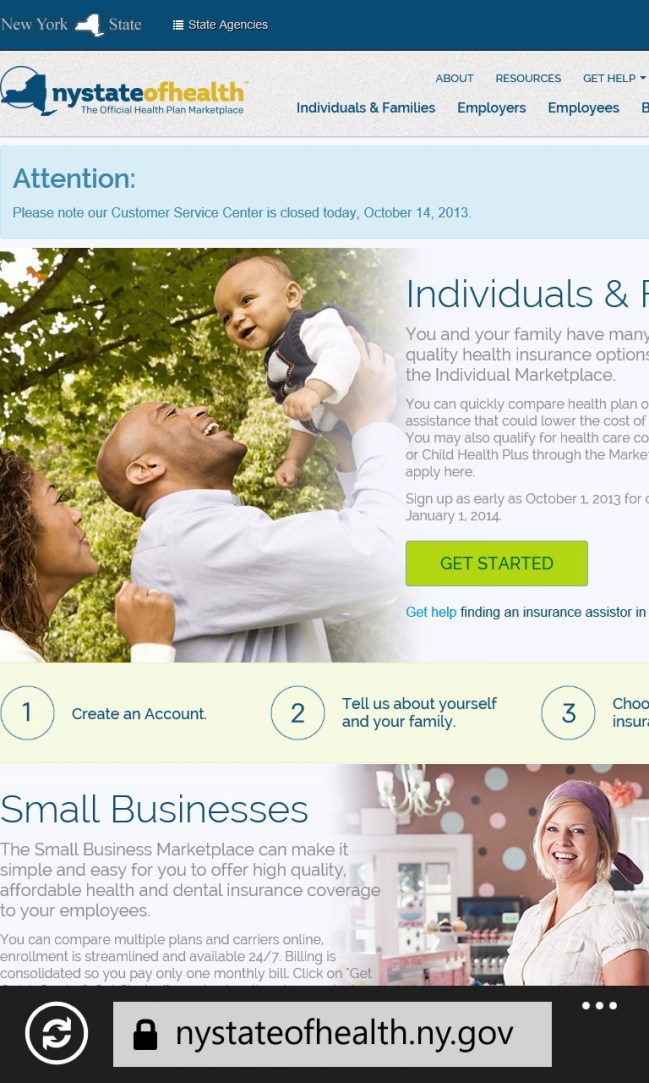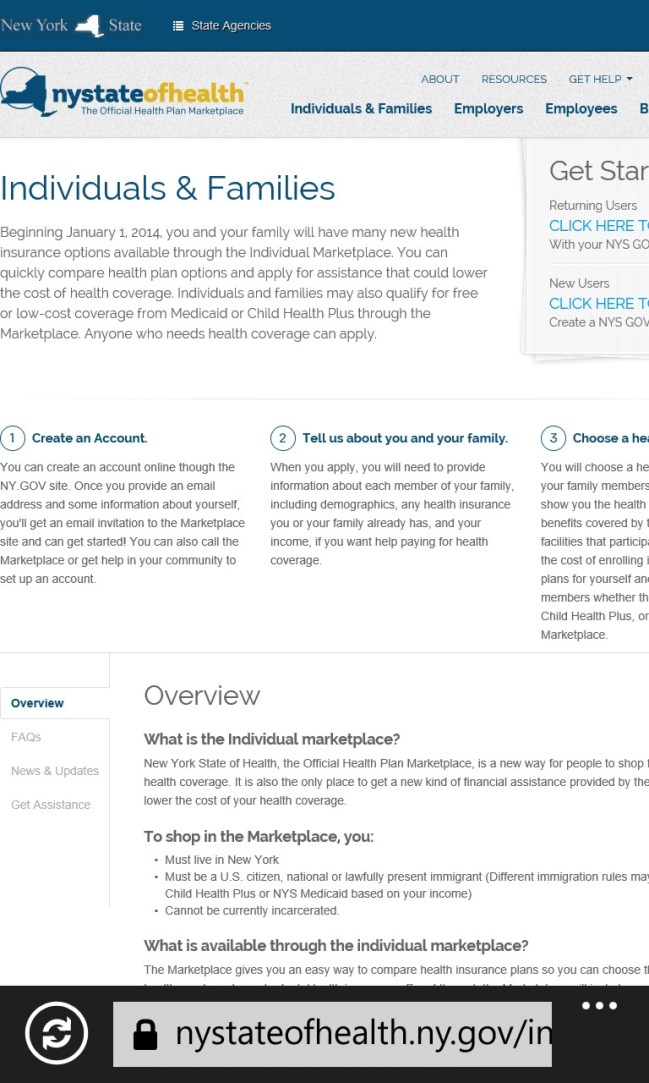With over three years to implement the health care exchanges that went live on October 1, the federal government had plenty of time to prepare its signature tool – http://www.healthcare.gov – for the mobile era. Though much has been written about the site’s woes, I haven’t read much about its mobile experience. I decided to learn more for myself by engaging in the mobile-first behaviors so common among the demographic deemed most crucial to the success of these exchanges: young, healthy people who can help off-set the higher costs of those with pre-existing conditions.
To gauge the experience, I did the following:
- Visited healthcare.gov on three mobile devices: iPod Touch, Nokia Lumia 1020, and Nexus 10 tablet.
- Searched for “Obamacare” and “Affordable Care Act” on Google and Bing.
- Looked for Affordable Care act mobile apps.
- Downloaded the WebMD app for the Nexus 10 and visited WebMD.com in search of mobile ads about the act.
Though far from comprehensive, I wanted to see if I would come across any signs of a mobile strategy, and, if so, how the experience would fare.
Based on what I’ve witnessed, it’s apparent that the healthcare exchanges have a lot of work to do to attract and service mobile users.
First, consider the healthcare.gov website. Only the iPod Touch served a true mobile site. Both the Lumia 1020 and the Nexus 10 gave me the full website, which overwhelmed the smartphone.
I clicked the link to sign-up using both the iPod and the Lumia, and after indicating that I live in New York, was directed to http://healthbenefitexchange.ny.gov/, the state’s exchange for buying health insurance. Both devices delivered its full website, too, reminding me that content optimized for 13 inch screens can be nearly unusable on a smartphone. 
The home page isn’t that bad, but tapping the “Get Started” button took me to this eyesore.
Seen here on my blog, it doesn’t look that bad, but I think even most mobile natives would get frustrated trying to navigate, enter information, and complete transactions within this interface.
I then turned my attention to mobile search. I used Bing and Google to search for “Obamacare” and “The Affordable Care Act” on my devices. I wanted to see what sponsored links these searches would prompt. On smartphones, both Google and Bing mingle paid-for, sponsored links with news and organic results. That could be bad news for the legislation because of the abundance of negative headlines that have dogged the healthcare exchanges since they debuted two weeks ago.
Sure enough, these search engines retrieved gloomy news stories, such as “Most People Cannot Sign Up for Affordable Care Act Coverage At Any Time” and “Affordable Care Act access troubles continue.” Buying up search terms could help make those headlines less apparent, but it looks like companies such as CVS and Blue Cross/Blue Shield have bid on those terms to serve links to their services instead.
Finally, I looked for apps. Finding none from the federal government, I downloaded the WebMD app and used WebMD.com, figuring it would be an ideal target for mobile ads informing me about the Affordable Care Act and the healthcare exchanges now in operation. Both the app and the mobile website serve ads, but I found none about the ACA, in spite of visiting several different sections of the app and site.
In spite of the high profile nature of the legislation and the long runway between signing and implementation, and in spite of the massive shift in user behavior away from desktops to smartphones and tablets, the healthcare exchanges are not optimized for so many of the very people the act needs to recruit and retain. The Obama administration could help itself mightily by:
- Creating a mobile-friendly version of healthcare.gov for Android and Windows Phone.
- Building smartphone apps that would work faster (in theory) and provide a mobile-friendly user interface.
- Buying search terms to capture users looking for help via Google or Bing and diminish the prevalence of negative headlines in the news.
- Serving mobile ads in the places people go for health information, such as WebMD.
Until then, like so many other services designed primarily for laptops and desktops, healthcare.gov will struggle to gain traction among mobile users.

